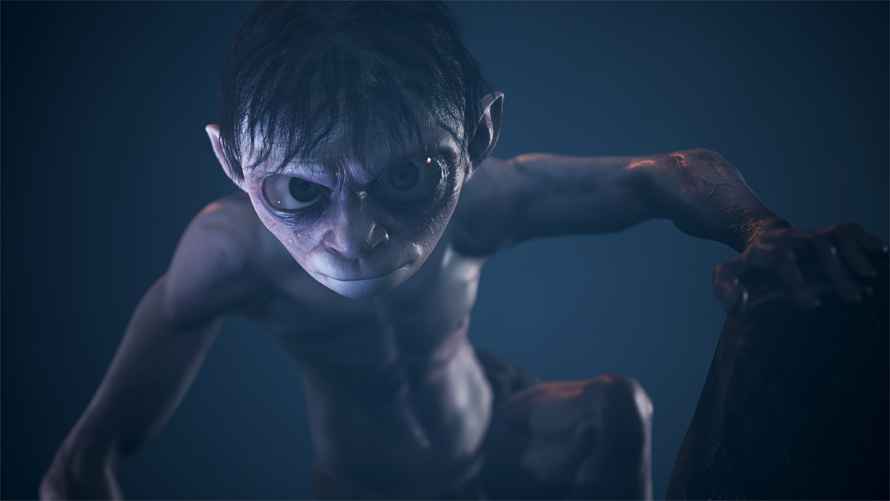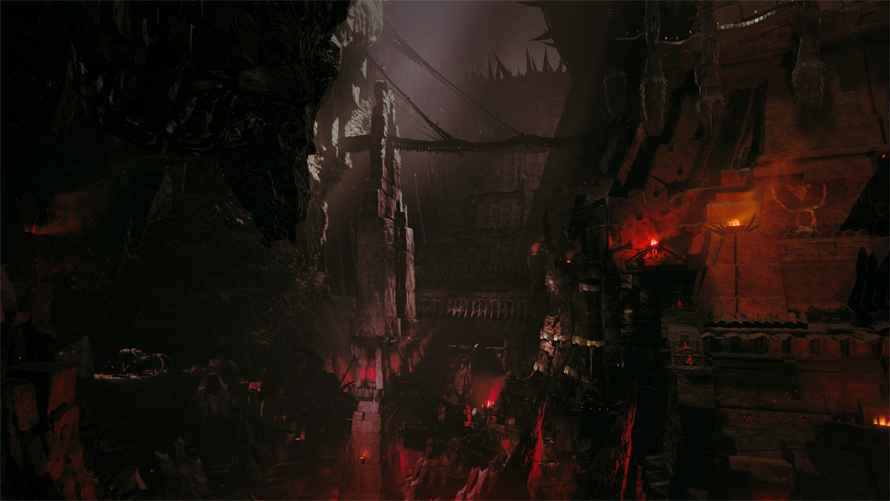Lord of the Rings: Gollum Review
When it comes to the Lord of the Rings, there are a few levels of fandom. Some people, of course, think the whole fantasy genre is a bunch of silly nonsense. We’ll ignore them. Then there are those who have read the books, maybe more than once. And seen the movies, too, it goes without saying. Finally, there are the super fans, who regard J.R.R. Tolkien’s masterpiece as fantasy’s Bible, Koran, and Upanishads all rolled into one, able to recite long passages by memory. if the developers of Lord of the Rings: Gollum don’t fit into the latter category, the experts they hired to advise the creators certainly do.
Gollum Beyond and Before
A respectful love of the source material shines through Gollum. Although deeply connected to the events of the novels, Gollum mostly takes place before Fellowship of the Ring, and transforms Sméagol/Gollum into a fly-on-the-wall character, to some extent witnessing the events prior to the books as much as participating in them. Much of the narrative is invented but is faithful to the lore, later characters, and events. While I’m not a LOTR acolyte by any means, Gollum seems nothing if not aware of the source, while finding ways to creatively fill in some gaps.
You play, obviously, as Gollum, who starts the game as a captive being interrogated by Gandalf, then known as the Grey Man. Gollum begins by telling the story of his escape from the Dark Tower of Barad-dûr in Mordor, essentially an extended tutorial. From there, Gollum — the character and the game — proceeds through a Lord of the Rings travelogue, visiting several iconic locations like the Mirkwood and the dungeons of Elvenking Thranduil.

I’m being a bit cagey about the narrative for a couple of reasons. For one, there’s genuine pleasure at unexpectedly arriving at a new, yet familiar, location. I hate to spoil that. For another, less happy reason, I ran into a bug that stopped my progress cold. More on that a little later.
A Tale of Two Hobbits
Sméagol/Gollum makes for both a fascinating and frustrating lead character. On one hand, he’s a psychologically rich invention, conflicted, tortured, and ambiguously moral. This plays out in the game as a series of choices. The player reaches a narrative branching crossroads and decides which character will respond. Additionally, both Sméagol/Gollum have specific abilities that help with exploration and combat.
I say combat, but I use that term loosely. Aside from Sméagol/Gollum being able to strangle enemies and stealth kill them, there’s almost no combat at all. Instead, The Lord of the Rings: Gollum focuses on action stealth and moving through the environment, generally avoiding enemy encounters.
While Sméagol/Gollum may be internally chaotic, narrative drama gets energy from clearly articulated conflict. In games, this is almost always represented by combat. This means that the pleasure of playing Gollum needs to come from the story and moving through the world, not from wielding weapons.

Things Fall Apart
Gollum has a large repertoire of abilities to jump, run, sneak, wall-climb, and slither his way around. The first problem is that none of those mechanics are new, creative, or very interesting. They’ve all been done, and often done better, in countless other action games. I say done better because, in Gollum, almost no action is entirely fluid or really dialed in. Both in performance and fidelity modes, jumping and climbing always felt a few frames short of fun. Missteps continue in controls and mechanics like throttling enemies. You have to hold down a button while Gollum strangles the hapless foe and a meter fills. Let go a little too soon and you’re dead. “And you’re dead” applies to all sorts of other situations where poor mechanics kill the fun.
The Lord of the Rings: Gollum is a linear game, and while there are some minor branching paths, moving forward means finding the environmental piece of the puzzle. Fans of open-world games full of choices will be disappointed by Gollum’s general lack of options in crafting their experience.
There are plenty of places where the game seems to hesitate, disbelieving my control input. There are a lot of bugs. At one point after a short cutscene, Gollum was transported into the scenic mesh. Any movement meant falling through the geometry and instant death. No number of restarts or tweaking the minimal graphics options fixed the problem. A day 1 patch fixed this specific scene, but the same bug occurred not long after.
Some Good News Amid the Bad
When it comes to presentation, The Lord of the Rings: Gollum is a mixed experience. Some of the environments are impressive at a distance and pay respectful, detailed homage to the books and lore. There’s quite a bit of variety in locations…at least to the point my game allowed me to play. Gollum himself is much like he appears in Peter Jackson’s films, which itself is faithful to the books. It’s an occasionally expressive character, obviously influenced by Andy Serkis’ performance. Overall, the game’s writing and voice acting are good, and the dialogue captures Tolkien’s tone. The story itself is pretty mediocre.

Character models aren’t going to blow you away, and environmental textures can be shockingly primitive in places. Gollum does not look like a game released in 2023. The musical score by Jun Broome, however, is incredibly interesting. It sounds like a catalog of extended playing techniques and ominous, oddball timbres like contrabass clarinet. Not much about Gollum entertained me, but the music always did.
The Lord of the Rings: Gollum tries to be a respectful homage to Tolkien’s masterpiece. Unfortunately, it’s expressed through buggy, unpolished, and not very interesting or enjoyable gameplay. Gollum is a fascinating and complex character, but makes a poor protagonist for an action game. Only ravenous fans of Tolkien will want to come near this game, and then only if they have a very high tolerance for crashes, bugs, and disappointment.
***PS5 code provided by the publisher for review***
The Good
- Tries to respect the lore
- Excellent music
- Some decent voice acting
The Bad
- Essentially broken
- Bugs, crashes
- Very dated graphics and mechanics
- Dull story

